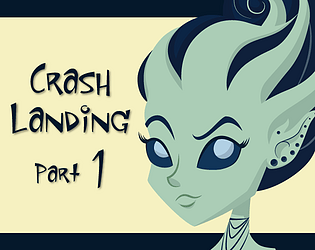10 Times Assassin's Creed Changed History
Ubisoft has once again fired up the Animus, this time transporting us to Japan’s tumultuous Sengoku Period. Assassin’s Creed Shadows introduces us to historical figures from 1579, such as Fujibayashi Nagato, Akechi Mitsuhide, and Yasuke, the African samurai who served under Oda Nobunaga. As with other entries in the series, these characters are seamlessly blended into a narrative that intertwines historical events with fictional elements, crafting a saga filled with themes of revenge, betrayal, and murder. While the game includes a humorous nod to the need for XP to unlock a gold-tier weapon, this is clearly a playful deviation from the historical narrative.
Assassin’s Creed is renowned for its historical fiction genre, masterfully weaving science fiction and conspiracy theories into historical settings. Ubisoft meticulously researches to create immersive open-world environments, yet it’s crucial to recognize that these games are not history lessons but creative reinterpretations. The developers often adjust historical facts to better fit the narrative they wish to tell, resulting in numerous “historical inaccuracies.”
Here are ten notable instances where Assassin’s Creed has creatively rewritten history:
The Assassins vs Templars War
 The central conflict between the Assassins and the Knights Templar is entirely fictional. Historically, there is no evidence of such a war; both groups, founded in 1090 AD and 1118 AD respectively, operated during the Crusades and were disbanded by 1312. The idea of a centuries-long ideological battle between them is a creative invention by Ubisoft, inspired by conspiracy theories.
The central conflict between the Assassins and the Knights Templar is entirely fictional. Historically, there is no evidence of such a war; both groups, founded in 1090 AD and 1118 AD respectively, operated during the Crusades and were disbanded by 1312. The idea of a centuries-long ideological battle between them is a creative invention by Ubisoft, inspired by conspiracy theories.
The Borgias and their Superpowered Pope
 In Assassin’s Creed 2 and Brotherhood, the Borgia family, led by Cardinal Rodrigo Borgia (Pope Alexander VI), is portrayed as the Templar adversary to the protagonist Ezio. However, the Templars did not exist in the late 1400s, and the notion of a magical Apple of Eden and a pope with god-like powers is pure fiction. The games also take creative liberties with the Borgias’ portrayal, depicting them as more villainous than historical records suggest, especially Cesare Borgia, who is depicted as a psychopathic leader without solid historical backing.
In Assassin’s Creed 2 and Brotherhood, the Borgia family, led by Cardinal Rodrigo Borgia (Pope Alexander VI), is portrayed as the Templar adversary to the protagonist Ezio. However, the Templars did not exist in the late 1400s, and the notion of a magical Apple of Eden and a pope with god-like powers is pure fiction. The games also take creative liberties with the Borgias’ portrayal, depicting them as more villainous than historical records suggest, especially Cesare Borgia, who is depicted as a psychopathic leader without solid historical backing.
Machiavelli, Enemy of the Borgias
 Niccolò Machiavelli is shown as Ezio’s ally and a leader within the Assassin’s Bureau, which contradicts his real-life philosophy favoring strong authority. Furthermore, Machiavelli’s actual relationship with the Borgias was more nuanced; he served in Cesare Borgia’s court and respected Rodrigo’s cunning, contrary to the game’s depiction.
Niccolò Machiavelli is shown as Ezio’s ally and a leader within the Assassin’s Bureau, which contradicts his real-life philosophy favoring strong authority. Furthermore, Machiavelli’s actual relationship with the Borgias was more nuanced; he served in Cesare Borgia’s court and respected Rodrigo’s cunning, contrary to the game’s depiction.
The Incredible Leonardo da Vinci and his Flying Machine
 Assassin’s Creed 2 portrays Leonardo da Vinci as a close friend of Ezio, aligning with historical accounts of his charisma. However, the game adjusts da Vinci’s timeline to keep him in the same location as Ezio. While da Vinci’s designs for machines like the tank and flying machine are inspired by his sketches, there’s no evidence these were ever constructed, especially the flying machine used by Ezio in the game.
Assassin’s Creed 2 portrays Leonardo da Vinci as a close friend of Ezio, aligning with historical accounts of his charisma. However, the game adjusts da Vinci’s timeline to keep him in the same location as Ezio. While da Vinci’s designs for machines like the tank and flying machine are inspired by his sketches, there’s no evidence these were ever constructed, especially the flying machine used by Ezio in the game.
The Bloody Boston Tea Party
 The Boston Tea Party, a non-violent protest, is dramatically altered in Assassin’s Creed 3, where protagonist Connor turns it into a violent confrontation with British guards. This fictionalizes the event significantly, and the game also suggests Samuel Adams orchestrated the protest, which is debated among historians.
The Boston Tea Party, a non-violent protest, is dramatically altered in Assassin’s Creed 3, where protagonist Connor turns it into a violent confrontation with British guards. This fictionalizes the event significantly, and the game also suggests Samuel Adams orchestrated the protest, which is debated among historians.
The Lone Mohawk
 Connor, a Mohawk, aligns with the Patriots against the British in Assassin’s Creed 3, despite the Mohawk historically being allied with the British. This represents a “what if?” scenario, with the rare historical example of Louis Cook inspiring Connor’s character.
Connor, a Mohawk, aligns with the Patriots against the British in Assassin’s Creed 3, despite the Mohawk historically being allied with the British. This represents a “what if?” scenario, with the rare historical example of Louis Cook inspiring Connor’s character.
The Templar Revolution
 Assassin’s Creed Unity attributes the French Revolution to a Templar conspiracy, simplifying complex historical causes like famine and social unrest. The game’s portrayal of the Reign of Terror as the entire revolution is also inaccurate, as it was just one phase of a multi-year event.
Assassin’s Creed Unity attributes the French Revolution to a Templar conspiracy, simplifying complex historical causes like famine and social unrest. The game’s portrayal of the Reign of Terror as the entire revolution is also inaccurate, as it was just one phase of a multi-year event.
The Controversial Killing of King Louis 16
 In Unity, the vote to execute King Louis 16 is depicted as close, swayed by a Templar’s vote. Historically, the vote was a clear majority in favor of execution. The game also underplays the King’s attempt to flee and plot a counter-revolution, which contributed to his execution.
In Unity, the vote to execute King Louis 16 is depicted as close, swayed by a Templar’s vote. Historically, the vote was a clear majority in favor of execution. The game also underplays the King’s attempt to flee and plot a counter-revolution, which contributed to his execution.
Jack the Assassin
 Assassin’s Creed Syndicate reimagines Jack the Ripper as a rogue Assassin, diverging wildly from the historical figure known for brutal murders in Whitechapel. The game’s narrative that he was trained by Jacob Frye and attempted to take over the London Brotherhood is a creative twist.
Assassin’s Creed Syndicate reimagines Jack the Ripper as a rogue Assassin, diverging wildly from the historical figure known for brutal murders in Whitechapel. The game’s narrative that he was trained by Jacob Frye and attempted to take over the London Brotherhood is a creative twist.
The Assassination of the Tyrant Julius Caesar
 Assassin’s Creed Origins reinterprets Julius Caesar’s assassination, portraying him as a proto-Templar. The game ignores many historical facts, including Caesar’s actual political reforms aimed at helping the poor. The depiction of his death as a victory against tyranny is at odds with the historical outcome, which led to the Roman Republic’s collapse and the rise of the Roman Empire.
Assassin’s Creed Origins reinterprets Julius Caesar’s assassination, portraying him as a proto-Templar. The game ignores many historical facts, including Caesar’s actual political reforms aimed at helping the poor. The depiction of his death as a victory against tyranny is at odds with the historical outcome, which led to the Roman Republic’s collapse and the rise of the Roman Empire.
The Assassin’s Creed series, while deeply rooted in historical settings, prioritizes storytelling over strict historical accuracy. This approach allows for engaging narratives that blend fact with fiction, offering players a unique perspective on history through the lens of historical fiction. What are your favorite examples of Assassin’s Creed bending historical truths? Share your thoughts in the comments.
-
Looking for the most affordable PlayStation 5 deal right now? AliExpress is running a special US Anniversary Sale with an incredible offer - the Sony PlayStation 5 Slim Disc Edition (import model) for just $397.94 after applying coupon code IFPD5NS aAuthor : Mila Dec 27,2025
-
Valve consistently delivers fresh surprises with frequent Deadlock updates. The latest patch, while modest in scope, brings balance changes to four heroes.Hero AdjustmentsCalico suffered substantial nerfs: her Return to Shadows ability saw significanAuthor : Ava Dec 27,2025
-
 Evil Soul ModDownload
Evil Soul ModDownload -
 Flags 2: MultiplayerDownload
Flags 2: MultiplayerDownload -
 Ultimate Fishing! Fish GameDownload
Ultimate Fishing! Fish GameDownload -
 Live2D Don’t Tell Your SisterDownload
Live2D Don’t Tell Your SisterDownload -
 Word Scramble - Family TalesDownload
Word Scramble - Family TalesDownload -
 MagnoJuegos 5-EN-1Download
MagnoJuegos 5-EN-1Download -
 Selobus FantasyDownload
Selobus FantasyDownload -
 Braindom: Brain Games TestDownload
Braindom: Brain Games TestDownload -
 Idle World - Build The PlanetDownload
Idle World - Build The PlanetDownload -
 Claras Love HotelDownload
Claras Love HotelDownload
- Black Ops 6 Zombies: How To Configure The Summoning Circle Rings on Citadelle Des Morts
- Harvest Moon: Lost Valley DLC and Preorder Details Revealed
- Roblox: Latest DOORS Codes Released!
- Silent Hill 2 Remake Coming to Xbox and Switch in 2025
- Roblox: Blox Fruits Codes (January 2025)
- Roblox: Freeze for UGC Codes (January 2025)








![Taffy Tales [v1.07.3a]](https://imgs.ehr99.com/uploads/32/1719554710667e529623764.jpg)




